Level 1 Lesson 1.1 – I Live in Beijing
1 Practice | 1 Quiz
Level 1 Lesson 1.2 – Characters: 住家北京所校间宿舍
1 Practice | 1 Quiz
Level 1 Lesson 2.1 – My Room Is Very Small
1 Practice | 1 Quiz
Level 1 Lesson 2.2 – Characters: 高兴房很
1 Practice | 1 Quiz
Level 1 Lesson 3.1 – I Learn Chinese At A School
1 Practice | 1 Quiz
Level 1 Lesson 3.2 – Characters: 汉语习法美
1 Practice | 1 Quiz
Level 1 Lesson 4.1 – I Want To Buy Fruits, Is It OK?
1 Practice | 1 Quiz
Level 1 Lesson 4.2 – Characters: 想买卖行叶
1 Practice | 1 Quiz
Level 1 Lesson 5.1 – Some Students Want to Buy Some Coffee
1 Practice | 1 Quiz
Level 1 Lesson 5.2 – Characters: 些咖啡台电脑
1 Practice | 1 Quiz
Level 1 Lesson 6.1 – This Computer Is Too Expensive, How About That One?
1 Practice | 1 Quiz
Level 1 Lesson 6.2 – Characters: 呢太便宜贵
1 Practice | 1 Quiz
Level 1 Lesson 7.1 – Do You Know How to Speak Chinese?
1 Practice | 1 Quiz
Level 1 Lesson 7.2 – Characters: 会爱说文
1 Practice | 1 Quiz
Level 1 Lesson 8.1 – I Didn’t Work At Home
1 Practice | 1 Quiz
Level 1 Lesson 8.2 – Characters: 睡觉工作话
1 Practice | 1 Quiz
Level 1 Lesson 9.1 – I Didn’t See That Chinese Book
1 Practice | 1 Quiz
Level 1 Lesson 9.2 – Characters: 看听音乐影
1 Practice | 1 Quiz
Level 1 Lesson 10.1 – I Am At Work
1 Practice | 1 Quiz
Level 1 Lesson 10.2 – Characters: 做干班课
1 Practice | 1 Quiz
Level 1 Lesson 11.1 – Well I’m On The Phone
1 Practice | 1 Quiz
Level 1 Lesson 11.2 – Characters: 洗打衣服件
1 Practice | 1 Quiz
Level 1 Lesson 12.1 – I Didn’t “Give” Them Class
1 Practice | 1 Quiz
Level 1 Lesson 12.2 – Characters: 给喂码知道
1 Practice | 1 Quiz
Level 1 Lesson 13.1 – One Table; Two Chairs
1 Practice | 1 Quiz
Level 1 Lesson 13.2 – Characters: 张桌把椅床刀
1 Practice | 1 Quiz
Level 1 Lesson 14.1 – There Is A Piece of Clothes in His Hand
1 Practice | 1 Quiz
Level 1 Lesson 14.2 – Characters: 菜杯碗盘里
1 Practice | 1 Quiz
Level 1 Lesson 15.1 – Surface, Underneath, Inside, Outside, Front and Back
1 Practice | 1 Quiz
Level 1 Lesson 15.2 – Characters: 前后面外雨伞剪
1 Practice | 1 Quiz
Level 1 Lesson 16.1 – What Are You Going To Do On Sunday
1 Practice | 1 Quiz
Level 1 Lesson 16.2 – Characters: 去时词飞
1 Practice | 1 Quiz
Level 1 Lesson 17.1 – We Didn’t Go Travel in China Last Year
1 Practice | 1 Quiz
Level 1 Lesson 17.2 – Characters: 回商店旅游
1 Practice | 1 Quiz
Level 1 Lesson 18.1 – When Does the Movie Start?
1 Practice | 1 Quiz
Level 1 Lesson 18.2 – Characters: 英候始走海
1 Practice | 1 Quiz
Level 1 Lesson 19.1 – Where Are You Having Dinner?
1 Practice | 1 Quiz
Level 1 Lesson 19.2 – Characters: 漂票亮男帅
1 Practice | 1 Quiz
Level 1 Lesson 20.1 – A Dog, A Cat, and A Fish
1 Practice | 1 Quiz
Level 1 Lesson 20.2 – Characters: 和猫狗鱼条只它
1 Practice | 1 Quiz
Level 1 Lesson 21.1 – I Go Eat Pizza with My Boyfriend in A Restaurant
1 Practice | 1 Quiz
Level 1 Lesson 21.2 – Characters: 来馆饺披萨片
1 Practice | 1 Quiz
Level 1 Lesson 22.1 – How to Write This Chinese Character?
1 Practice | 1 Quiz
Level 1 Lesson 22.2 – Characters: 怎读写字句
1 Practice | 1 Quiz
Level 1 Lesson 23.1 – How Is the Weather Here?
1 Practice | 1 Quiz
Level 1 Lesson 23.2 – Characters: 样非常冷热
1 Practice | 1 Quiz
Level 1 Lesson 24.1 – Can I Turn on the Computer?
1 Practice | 1 Quiz
Level 1 Lesson 24.2 – Characters: 能视门扇开关
1 Practice | 1 Quiz
Level 1 Lesson 25.1 – Please Take A Seat and Have Some Tea!
1 Practice | 1 Quiz
Level 1 Lesson 25.2 – Characters: 请进问吧坐
1 Practice | 1 Quiz
Level 1 Lesson 26.1 – He Has Gone To The School
1 Practice | 1 Quiz
Level 1 Lesson 26.2 – Characters: 完雨雪钟坏
1 Practice | 1 Quiz
Level 1 Lesson 27.1 – What Happened To You? Doctor, Hospital, Medicine
1 Practice | 1 Quiz
Level 1 Lesson 27.2 – Characters: 医院病舒头疼药
1 Practice | 1 Quiz
Level 1 Lesson 28.1 – I Don’t Take Subway, I Drive There
1 Practice | 1 Quiz
Level 1 Lesson 28.2 – Characters: 火地铁出租车
1 Practice | 1 Quiz
Level 1 Lesson 29.1 – I Miss You A Lot Everyday Too
1 Practice | 1 Quiz
Level 1 Lesson 29.2 – Characters: 每都也快慢辆
1 Practice | 1 Quiz
Level 1 Lesson 30.1 – When, Where and How Did You Buy It
1 Practice | 1 Quiz
Level 1 Lesson 30.2 – Characters: 网站告诉
1 Practice | 1 Quiz
Level 1 Lesson 15.1 – Surface, Underneath, Inside, Outside, Front and Back

Oops...Members Only!
How to Say Up, Down, Inside, Outside, Front and Back in Chinese 方位词: 上 下 里 外 前面 后面
In this video lesson we'll learn how to say Up, Down, Inside, Outside, Front and Back in Chinese with 方位词: 上 下 里 外 前面 后面 and practice Existential Sentences in Chinese with 有 a little bit more.
- Practice Existential Sentence in Chinese with 有 (II). See also (I).
- 方位词: 上 下 里 外 前面 后面
- How to Say Up, Down, Inside, Outside, Front and Back in Chinese
VOCABULARY
GRAMMAR
Grammar 1: How to Say Up, Down, Inside, Outside, Front and Back in Chinese · HSK 1
We learned about Locality Noun 里 already. In this lesson we'll learn more Locality Nouns, which are called fāngwèicí 方位词 in Chinese. In this lesson we have more 方位词. These 方位词 are common ways of how to say Up, Down, Inside, Outside, Front and Back in Chinese.

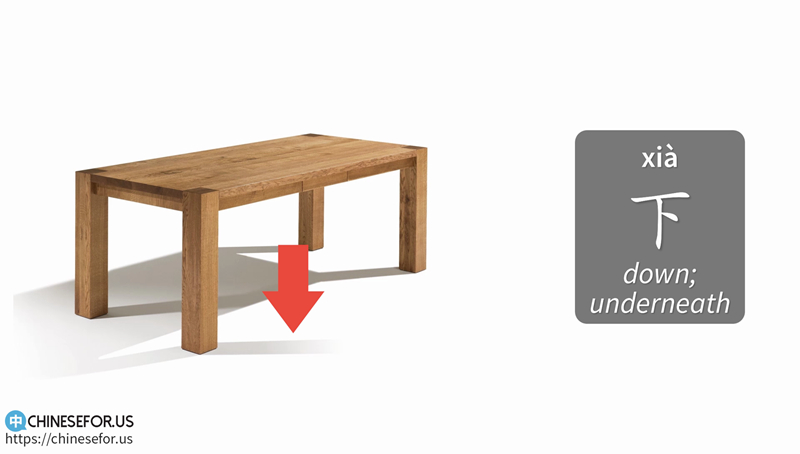
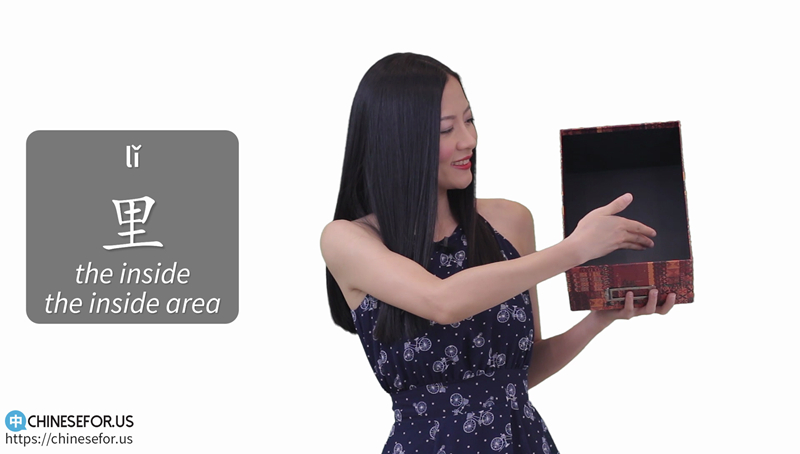
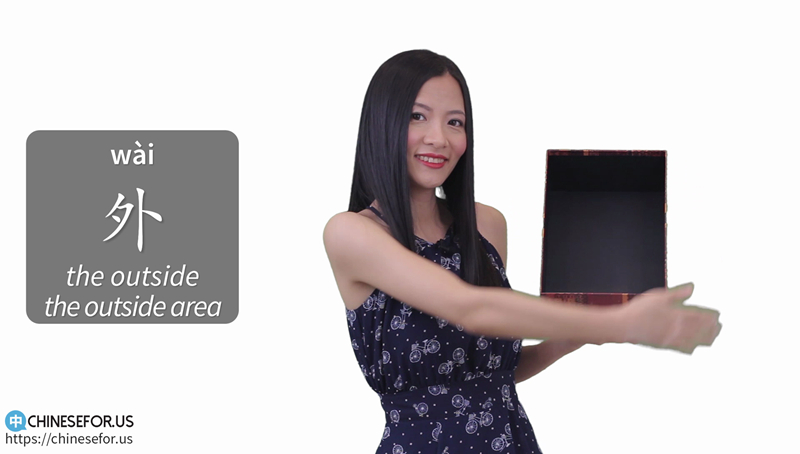
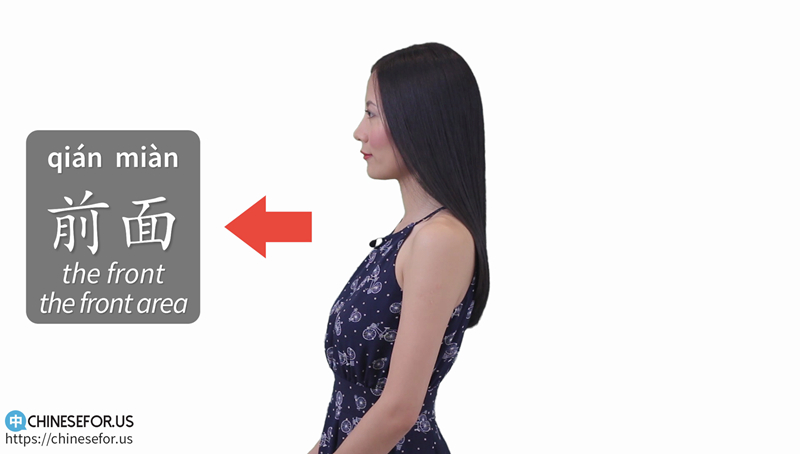
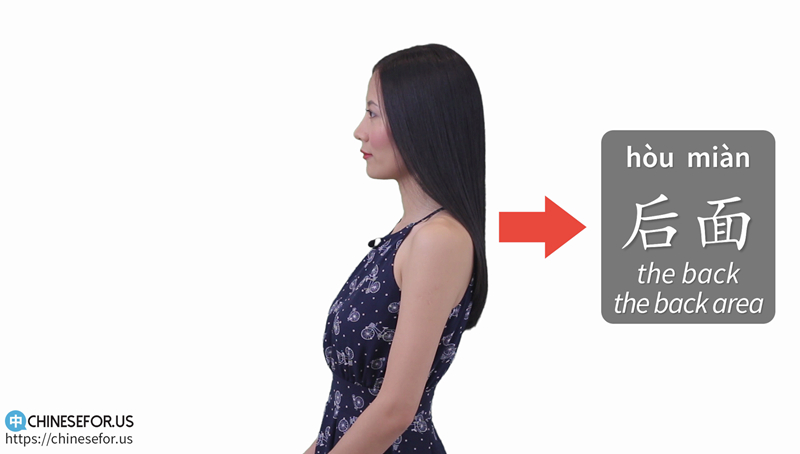
Grammar 2: Existential Sentences with 方位词: 上 下 里 外 前面 后面 · HSK 1
方位词: 上 下 里 外 前面 后面 can all be used in an Existential Sentence with this structure:
Place/Object + Locality Noun + 有 + Object
Please practice Existential Sentences in Chinese:
- chuángshang yǒu yíjiàn yīfu
床上有一件衣服。
there is a "jian" (of) clothes on the bed - zhèzhāng zhuōzi xià yǒu yìběn shū
这张桌子下有一本书。
there is a book under this "zhang" (of) table - yīfuli yǒu yìbǎikuài qián
衣服里有一百块钱。
there is 100 RMB in the clothes (pocket). - fángzi wài yǒu yíge rén
房子外有一个人。
there is a person outside of the house/apartment - wǒ qiánmiàn yǒu yìbēi chá
我前面有一杯茶。
there is a cup of tea in front of me - shāngdiàn hòumiàn yǒu yìsuǒ xuéxiào
商店后面有一所学校。
there is a school behind the store
Very good lesson.
I hope there will be some review every few lessons.
Hi,
I struggle to say sentences with many third tone syllable’s correctly. For example,
我前面有几把雨伞。
The sentence above contains five third tone syllable’s. When I hear a Chinese speaker such as the teacher pronounce sentences such as this I have difficulty recognizing the tone changes.
The tones course describes how to pronounce three third tone syllable’s in a row. However, I did not think it discussed how to pronounce four or five third tone syllable’s in a row.
I would really appreciate any advice or tips people can offer.
Thanks
My understanding is that you can separate longer groups of 3rd tone characters into smaller groupings and then apply the tone change rules to those smaller groupings. There doesn’t seem to be a clear/firm rule on how to make the smaller groupings – it should just make sense in context.
So, to try an example – if I were saying “I gave you an umbrella”, I might separate the 3rd tones like this:
我给你 把雨伞
That grouping makes sense to me and breaks what would have been 6 3rd tones in a row into 2 groups of 3 3rd tones – easier to say.
Thanks Jo,
One of the lessons in the Pinyin tones course briefly addresses this topic. Maybe the HSK 2 or HSK 3 courses on this website discuss it in more detail.
Thanks again,
why is the measure word for students ‘ge’ and not ‘wei’?
Because wei is a polite/honorific term used to show ‘respect’ towards a person(s). Students don’t need to be shown respect but teachers would because they hold importance.